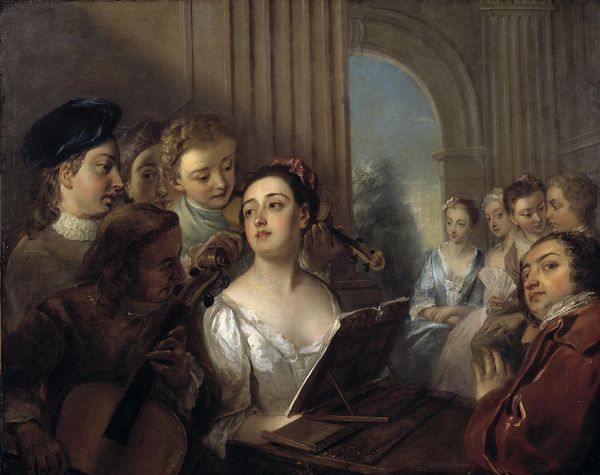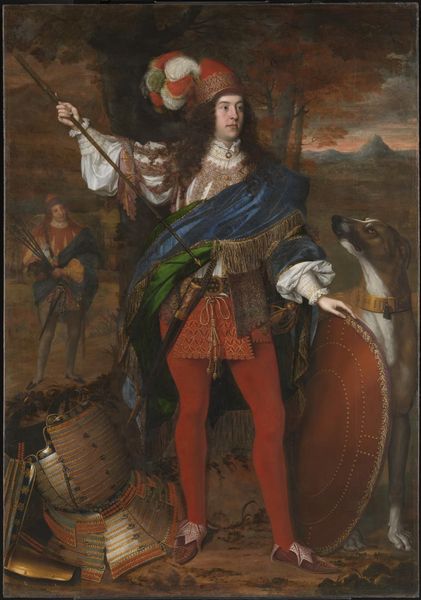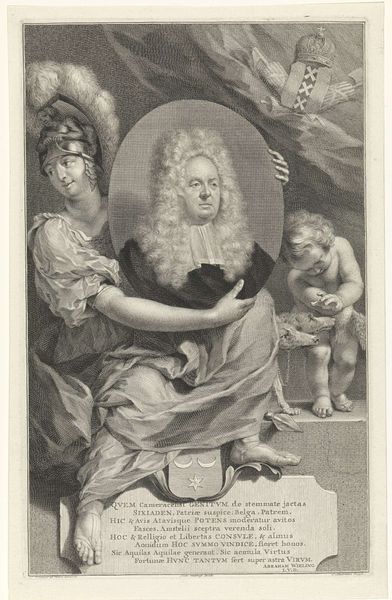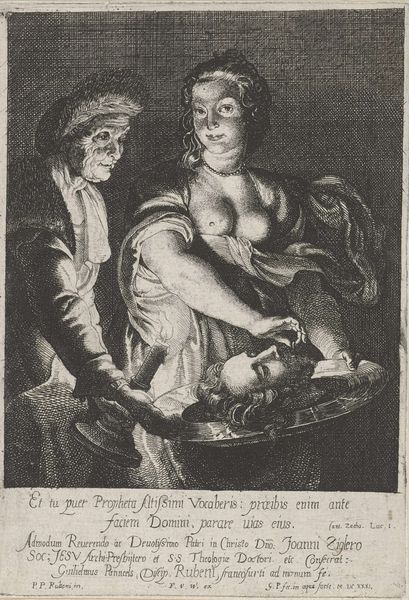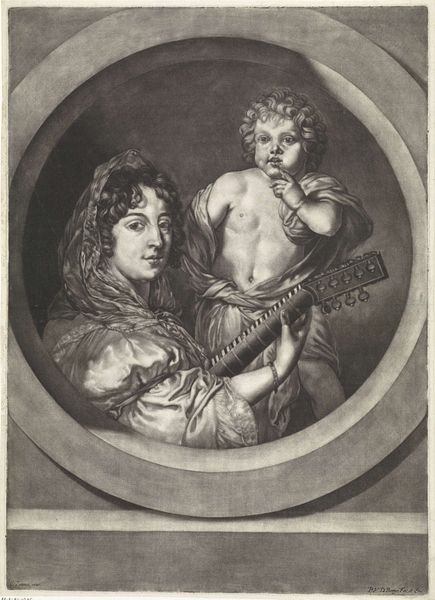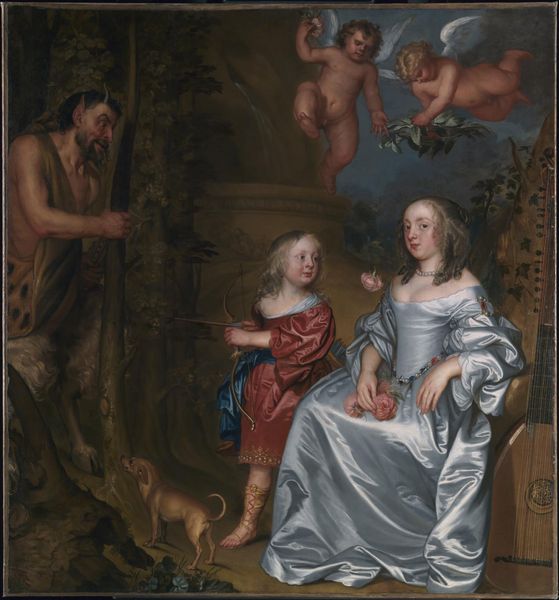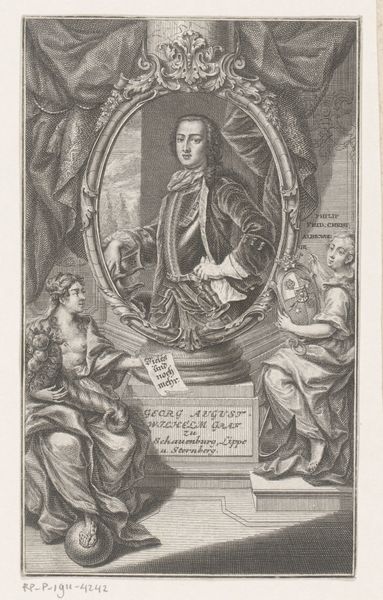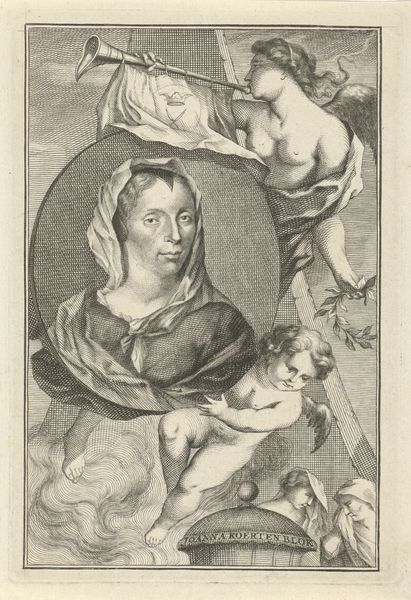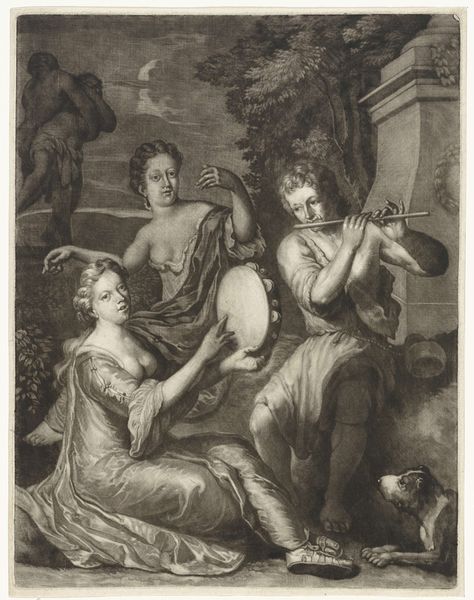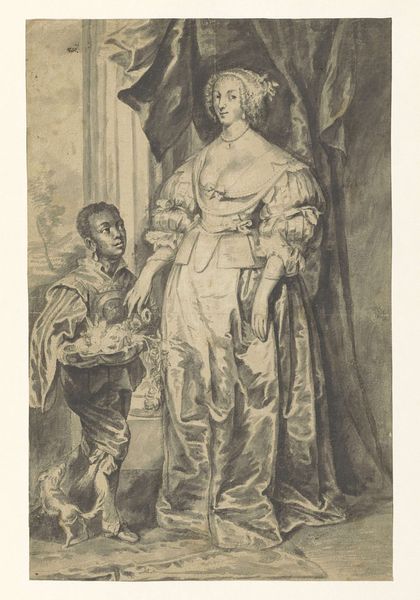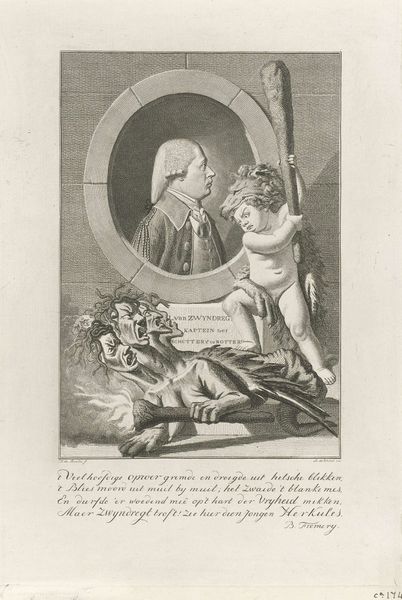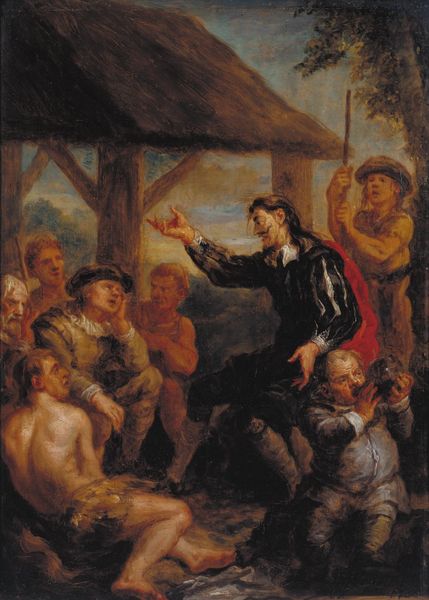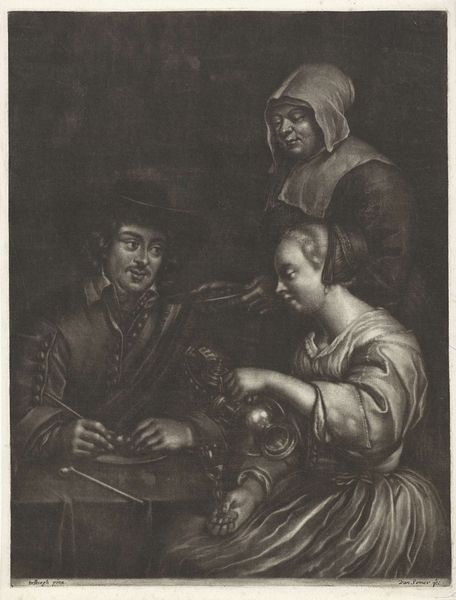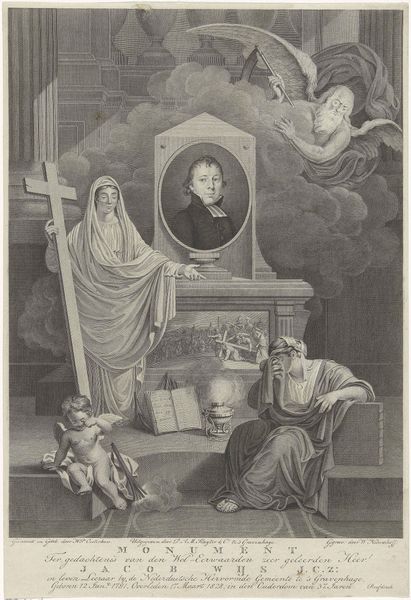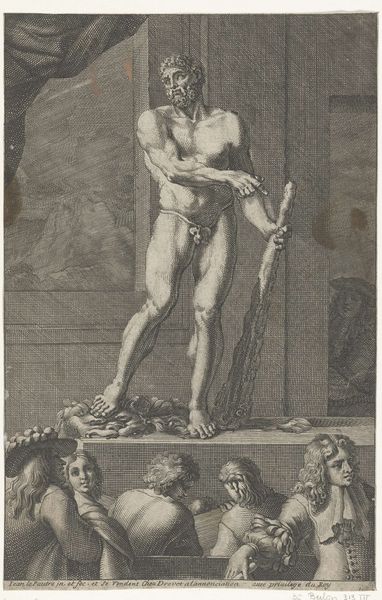
painting, oil-paint
#
portrait
#
venetian-painting
#
painting
#
oil-paint
#
mannerism
#
history-painting
Copyright: Public Domain: Artvee
Editor: Here we have Jacopo Tintoretto’s “Portrait of Ottavio Strada,” created in 1567 using oil paint. The arrangement feels almost staged, yet unsettling, like a dream. What elements stand out to you in this piece? Curator: The formal organization is undeniably intriguing. Note how Tintoretto orchestrates the interplay between the portrait’s dark tonality and the allegorical figures bathed in a lighter register. This duality activates the surface. Do you see how the cool detachment of the sculptural bust contrasts against the warm vitality of the assisting female figure, creating a pictorial tension? Editor: I do. It's almost as if he's dividing the painting into zones of artifice versus life. Does that division say anything about the sitter? Curator: Observe Strada's posture. He presents a meticulously curated offering—leaves? Fruit? What do they signify? How does the object function as a signifier? We might also ask, what is the nature of the architecture hovering behind the figure, presented in almost vaporous strokes? These pictorial strategies prompt a series of questions, a puzzle of presentation and representation. Editor: So you’re less concerned with who Ottavio Strada was, and more interested in how Tintoretto uses visual cues to communicate about him? Curator: Precisely. Through a calculated deployment of form, colour, and symbolic juxtaposition, Tintoretto crafts a narrative whose intricacies lie beyond the purely representational. We are left to interpret Strada’s identity through the formal relationships within the picture plane. Editor: That’s fascinating. I usually look for biographical context first, but I see how much is communicated simply through the visual relationships themselves. Curator: Exactly! And that, perhaps, reveals the genius of the composition. The artwork transcends a mere likeness, instead, becoming an encoded construction rife with visual information.
Comments
rijksmuseum over 1 year ago
⋮
Seventeen-year-old Ottavio Strada is portrayed in an unusual – allegorical – manner. He receives a cornucopia filled with ancient coins from Fortune, while turning away from a statue of Venus. The gold and silver signify not only his future riches, but also allude to his study of ancient coins, a pursuit in which he was trained by his father, the antiquary Jacopo Strada.
Join the conversation
Join millions of artists and users on Artera today and experience the ultimate creative platform.
